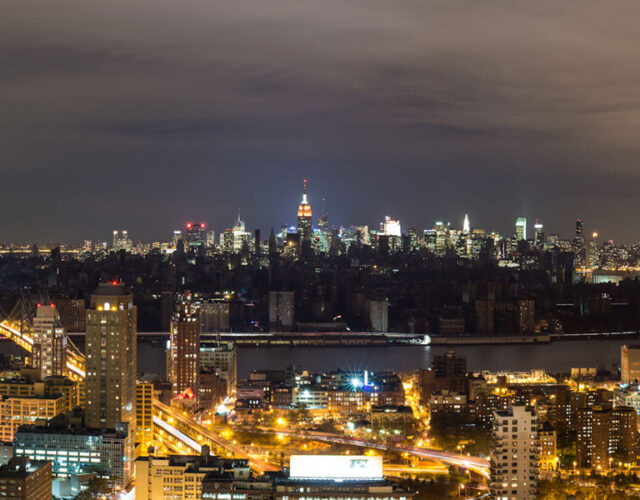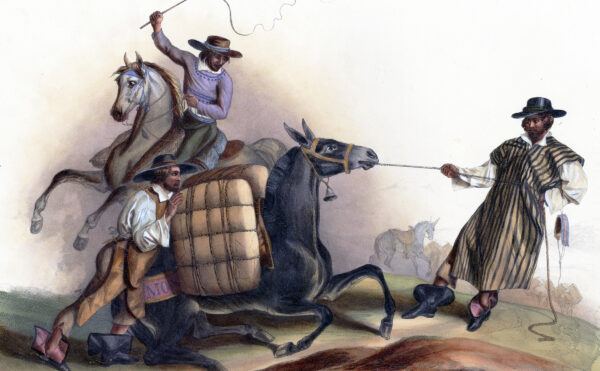Ernest Freeberg. The Age of Edison: Electric Light and the Invention of Modern America. Penguin Press, 2013. 354 pp. $27.95.
Of all the famous images from Hurricane Sandy, the one that unsettled me most was the panoramic shot of the New York City skyline with almost everything below 26th Street dark. To see half of the City That Never Sleeps as nothing but a shadowy silhouette, well, it looked like the end of the world.
Of course, New York survived perfectly well without electric light for about 250 years after its founding in 1624. Since then electricity and electric lights have brought profound changes to the city and the rest of the world. Ernest Freeberg chronicles this revolution in The Age of Edison: Electric Light and the Invention of Modern America. Like a prism breaking sunlight into a rainbow, Freeberg breaks the history of electric light into brilliantly colored stories.
The birth of electric light doesn’t begin and end with Edison. Freeberg starts with Alessandro Volta and his report in 1800 of his new invention, the battery. Humphry Davy quickly follows with the first practical electric light, the arc lamp, in which current is passed through two carbon rods set side by side to produce an arch (or arc) of white-hot light across their ends. Others commercialized Davy’s invention, and in the 1870s it became the first electric light to illuminate town squares, hotel lobbies, and shop windows. In the home, though, the overwhelming brightness and flickering made the arc lamp less than ideal. Other inventors got to work on the incandescent lightbulb, lit by an electrified glowing filament. Finding the right filament proved tricky, though; most burned out too fast or didn’t glow brightly enough (or both). Thomas Edison and others solved the filament problem, and by the early 20th century incandescents had completely replaced arc lamps.
While arc lamps and incandescent bulbs weren’t perfect, they were a massive improvement over firelight. As a volunteer at Valley Forge National Historical Park, site of George Washington’s army encampment during the winter of 1777–1778, I’ve attempted my fair share of projects by the light of a cabin fireplace. Those attempts have led only to frustration. Even the gas lamp, once considered a vast upgrade over firelight, had the power of only 16 candles. Gas lamps also belched soot, filled rooms with oppressive heat, and occasionally suffocated people. No wonder people greeted the arrival of electric illumination in their towns with music, parades, cannon fire, and the ceremonial burial of oil lamps.
But for 19th-century Americans electric light was about much more than just illumination. Light would show the cosmopolitan nature of their little town. Light would force criminals back into their dark hidey-holes and keep the public safe. Light would even push back spiritual darkness and make people better. Let there be light! Even the smallest prairie towns installed large arc-light towers, illuminating their empty main streets. “There is no need for them whatsoever,” mused Paul de Rousiers, a Frenchman traveling through Oklahoma in 1891, but once the lights were installed, “you [could] never make [a resident] confess that the city of his adoption is not one of the wonders of the world.”
The omnipresent light de Rousiers described was uniquely American. Paris hosted the first International Exposition of Electricity in 1881, but the City of Light (named for its 56,000 gas lamps) had little electric illumination beyond the fair’s borders. When European cities did adopt electric lights, they brought in American firms to do the work. Also uniquely American was the number of people with bright ideas for improving the country’s electrical system; it seemed as if every farmer, housewife, and mechanic had an improvement. When asked by reporters why Americans were more inventive than the British, Edison suggested wryly that perhaps the British just didn’t eat enough pie, though many chalked it up to the patent system. “A new power of achievement has come into human thinking,” said the head of the patent office, “and no explanation for the change is even plausible which ignores the stimulating influence of a century of patent law.”
American patent laws were unusually liberal. Any citizen could apply for one at a reasonable cost. It was the new version of the American dream: a chance to make a fortune through individual cleverness. People joked that “every true American man would feel ashamed to go to his grave without at least one patent to his name.”
And, boy, were lights everywhere. Dramatically lit theaters drew people to evening shows: “see the circus while it’s in town” urged the Atlanta Constitution in 1879, “but definitely go to the evening show!” Night baseball games drastically improved the sport’s popularity as day laborers could attend. Doctors could see more clearly in surgery by electric light than by the old combination of gas lamps and sunlight, and lights attached to microscopes confirmed germ theory. “Electric fish traps” lit up the deep sea, luring fish toward the waterproofed light source. Clothing and jewelry sparkled with tiny incandescent bulbs; any woman could sport inexpensive light-up brooches, but Alice Vanderbilt was the talk of the 1883 social season when she arrived at a costume ball as the Spirit of Electricity in a golden gown studded with diamonds and tiny bulbs lit by hidden batteries.
Not everyone welcomed electric light. The Boston suburb of Newton opted out altogether, considering electric lights an indulgence, even a waste, when everyone should be in bed by 10:00 p.m. Young lovers found their rendezvous flooded with light. Angry citizens tried to chop down arc-light towers and light poles, their ugliness overwhelming even the promise of illumination. City Beautiful movements also pushed back: they opposed buildings designed to look good lit up at night (with little care to how they’d look during the day); the illumination, in color, of Niagara Falls; and electric advertisements covering entire buildings. One department store’s powerful spot-lit ads could lure potential customers from 75 miles away.
Beyond the aesthetic dangers lurked very real threats. Lacking standards and in a rush to be electrified, towns found themselves saddled with shoddy work. Birds and insects attracted to the light were killed in large numbers, their tiny bodies littering the streets. A few high-profile deaths, including one telegraph lineman whose body lay trapped in wires for an hour and a half shooting flames from his mouth, left people wary of the dangers inherent in electricity. But nothing stopped the spread of electric light.
Freeberg tackles so many facets of electric light that reading The Age of Edison is constantly surprising: everything from artful lighting design, to how electric light changed the workday, to recounting some ugly but then popular stories about “inferior” races being introduced to electric light. In clear, thoughtful prose Freeberg lets us see these little glowing bulbs as if for the first time. I found myself peeking under my lampshades for a better look.
The success of electric light has left the world so illuminated that even astronauts in space cannot avoid light pollution, giving special poignancy to one of the book’s illustrations: Broadway newly illuminated by arc lights in 1880, under a sky heavy with stars. It’s astonishing to see them all, knowing that today a star can barely be seen above the city lights. But we’ve made our choice. Urban planner Charles Mulford Robinson said it best in 1918: “There is hardly a lovelier picture on earth than the night view of a great city—its thousands of lights twinkling in a mighty constellation. . . . Its stars sing together, and their song is of the might of ourselves.”




